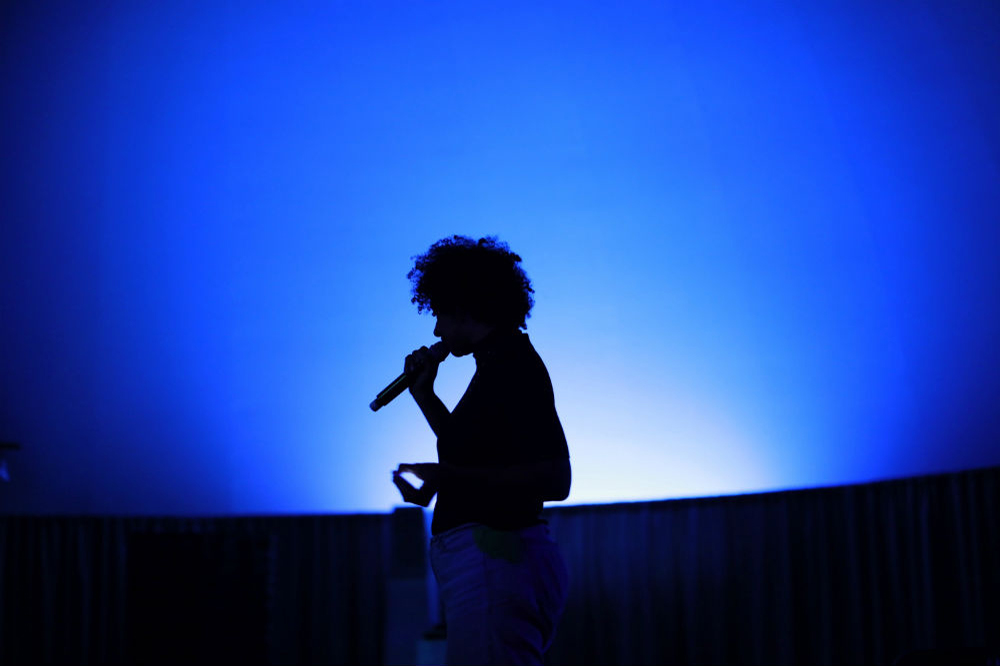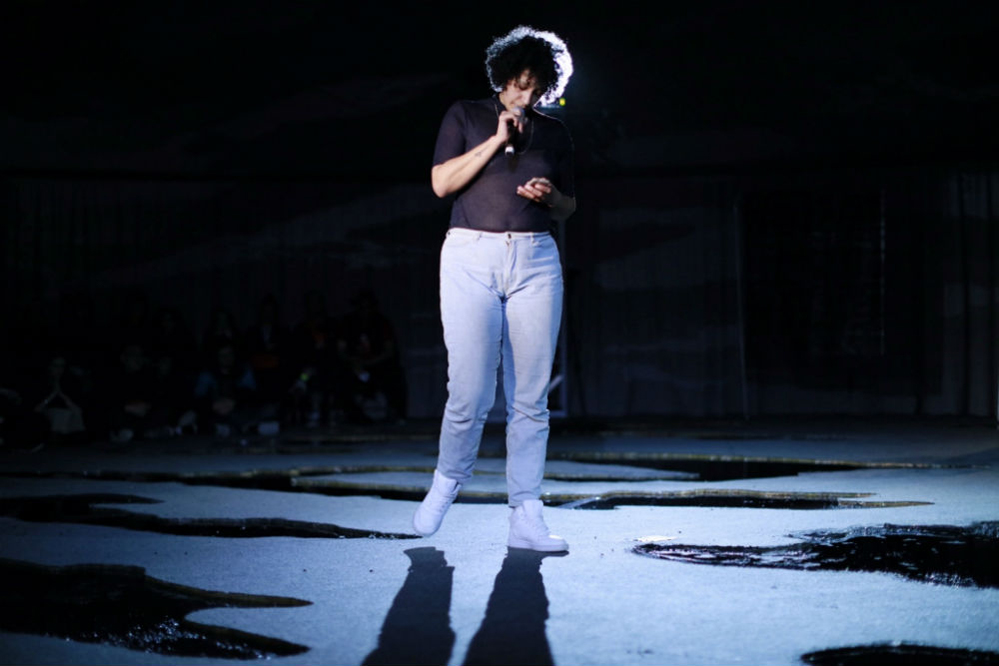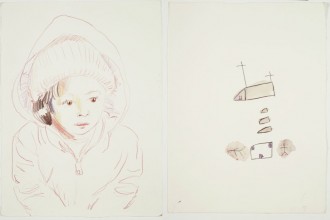The beautiful weather and the Spring Open House invitation – highlighting some new and promising exhibitions featuring works by Ian Cheng, Maureen Gallace, and Tomáš Rafa, among others – were attractions enough this weekend at Long Island City’s MoMA PS1. But I went to the museum on a mission: To see OR LIFE OR (2017), the 45-minute performance starring Hannah Black, a collaboration with musician Bonaventure and designer Ebba Fransén Waldhör.
I wasn’t alone. Throngs of people lined up outside the museum’s always-ominous VW dome to see Black at work.
Black, of course, very recently caused a seismic uproar in the artworld by calling for the removal and destruction of Dana Schutz’s controversial painting Open Casket (2016), currently included in the Whitney Biennial. Her open letter to the Whitney garnered vitriolic responses from artists like Coco Fusco and Gary Indiana, as well as writers and critics from almost every corner of the Internet. It has become a touchstone for debates about race and censorship today.
Given the impact of the letter it is no surprise then that Black is now being heavily scrutinized as a visual artist. Heretofore, she’s been mainly known for her words, writing extensively for Artforum, 4columns, The New Inquiry, Texte zur Kunst, and publishing the genre-bending book Dark Pool Party (Dominica & Arcadia Missa, 2016). The Schutz controversy showed a large audience that considers her something of a thought leader. OR LIFE OR was a chance to get a sense of the larger creative practice, which incorporates video, performance, and – of course – text.
I first encountered Black’s work last summer in a group show titled Welt Am Draht (World on A Wire) at the newly founded Julia Stoschek Collection space in Berlin. Black presented the video Bodybuilding (2015), a somewhat lackluster piece bringing together images of bodybuilders and scrolling text referring to the body, such as, “Please help my body refuses to grow/change!!!” Concurrently the Berlin Biennale was in full swing, which Black famously reviewed for Artforum – one of the more celebrated reviews of that exhibition.
It was also at that moment that Black and Bonaventure (Soraya Lutangu) embarked on a collaboration, bringing together spoken word and music for the very first time as part of Berlin Community Radio’s Boat Rage #4. Since then the two, with the help of Ebba Fransén Waldhör, who designs the sets, have presented other iterations of this initial performance at the ICA in London, the mumok in Vienna, and now at PS1.
The afternoon’s performance began in almost pitch black. Lights from different angles spotlighted Black, as she roamed and paced restlessly around the space.
Waldhör’s set evoked a broken, dystopian arena: small pool-like cutouts filled with resin and a black tar substance littered the floor of the dome. Throughout the performance, piercing ambient noises would interject alternating with hypnotic mashups of songs by Beyoncé and other pop music. Laser projections of excerpts from Black’s text were drawn against the wall.
Seeming almost completely unaware of the intent audience packed around the dome, microphone in one hand and smartphone in the other, Black launched into a monologue.
“At the beginning of the film or dream … ,” she began. What followed was a rapid-fire, lyrical reverie of poeticized statements about the body, capitalism, race, politics, and life. It was too much of a torrent of words to capture (though I did try, scribbling notes in the darkness).
But what stood out beyond the specific words was her command of them, and Black’s overall aura of eloquence mixed with intensity. She often looked down at the floor or occasionally at her phone. This was ostensibly to stay on the script although the artist seemingly knew the text by heart and delivered every word at lightning speed with great authority, sometimes speaking in a mesmerizing monotone, at other times breaking into an eerie falsetto.
While Black’s ravings seemed cryptic and impossible to decipher in one sitting (e.g. “Fuck the weaponization of solitude …”), the theatricality of the work was effective, at times feeling comparable to Beckett. Black is personal and candid in her revelations, relentlessly self-critical in tone. “Europeans raised me but I also raised myself,” she says.
The whole spectacle – at once stream-of-consciousness and choreographed – very successfully evoked an imagined scene of aching discord, perhaps, between the body and the self, or self and society.
Putting aside the debate that Black instigated with her Whitney letter, OR LIFE OR seems to present work that is both emotional and a display of the intellectual heft of the artist herself. Her art criticism may have brought her to attention, but at PS1 she showed how that criticism, turned equally outward and inward at herself, could be spun into an art of its own.
This article was originally published by artnet News, one of our partners.
























